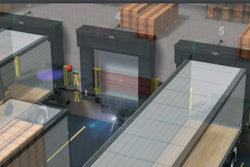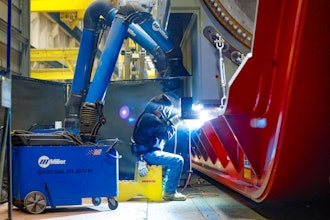What is the biggest difference between humans and animals? This question has been asked many times, evoking a range of different answers. "Being able to use tools" is one of the most frequently cited differences. However, it was found that in fact there are animals that use objects such as stones or twigs to catch prey, in some cases even shaping these objects before use. So the description of the difference has been amended to "Only humans create tools to make other tools."
Be that as it may, it certainly can be said that the advancement of humanity and the progress of civilization was driven by the discovery and continuous improvement of tools. And in our modern age, many of these tools are being made more convenient, more powerful, and more functional by the application and evolution of electronics technology.
■Cars and electricity have been closely linked from the start
A prime example of this development is the automobile. Even in its earlier stages, the car would not have been possible without electricity. The internal combustion engine requires an electrical spark from a spark plug to ignite the fuel, and without the electric starter motor, even getting the engine to run would be a major undertaking. Without headlights or windshield wipers, the car could not drive at night or in the rain, and without brake lights or winkers, the number of collisions would certainly rise. We can categorize these types of equipment as "electrical equipment necessary for moving the car."
Electrical equipment commonly used in automobiles
On the other hand, the value of the car as a product has increased through the addition of electrical equipment that makes driving more pleasurable, such as air conditioning, car audio systems, car navigation systems, etc. Various sensors are indispensable for electronic systems controlling the engine and other aspects of the car. In recent years, it has become more common to take some of the information provided by these sensors and present it to the driver in an easy to grasp format, thereby contributing to more efficient and better driving.
For example, an indicator that directly shows the actual fuel consumption at any moment helps enormously with realizing fuel economy, and indicators showing the timing for oil changes and other necessary actions help to keep the car in optimum condition. A system that warns the driver when the external temperature drops below three degrees centigrade alerts him or her to the possibility of road surface freezing. Recently, some manufacturers equip their cars with systems that can analyze driving patterns and provide guidance for safe and economical driving.
Tire pressure warnings, anti-lock braking systems (ABS), electronic slip control (ESC), collision prevention systems and similar features that contribute actively to driving safety are being increasingly included as standard equipment. We may call this category "electrical equipment for comfort and safety."
Over the course of the past twenty years or so, the importance of new electronics technologies has increased notably. In order to preserve the earth's environment and resources, improving the fuel economy of cars has become a critical and pressing goal, and electronic systems that directly contribute to better performance are attracting wide interest. Developments in this field began in the mid-1970s, starting with electronic control for ignition and fuel systems. What originally had been performed by purely mechanical means now was put under electronic control, resulting in drastically improved flexibility. Suddenly, it became possible to adjust the amount of fuel supplied to the engine as well as the ignition timing over a much wider range. This in turn enabled designers to successfully combine output performance with cleaner exhaust emissions.
Nevertheless, until about ten years ago, a car with a displacement in the 2-liter class consumed about 1 liter of fuel for every 10 kilometers when driving in an urban environment. By contrast, cars in the same class these days habitually get about 15 to 20 kilometers per liter. The biggest reason why this improvement in fuel economy came about is the impending introduction of fuel economy standards worldwide, such as the CAFE (Corporate Average Fuel Efficiency) standard.
If average fuel consumption figures calculated on the basis of every car sold by a manufacturer do not meet certain CAFE standards, the manufacturer's name may be made public, penalties may apply, or a limit may be imposed on the number of cars that can be sold. Because this affects especially manufacturers with high sales figures for large and luxurious cars that tend to consumer more fuel, there is strong pressure on improving the fuel economy of all models in a company's lineup.
■Electronics technologies helping to improve fuel economy
There are largely four different approaches to improve the fuel economy of an automobile. The first is improving the fuel performance of the engine itself. The second approach involves assistive systems or devices that provide improvements in areas where the engine is not good at. Third is the reduction of air resistance while the car is driving. And finally, there is reduction in the weight of the automobile. Two of these approaches are intricately linked to electronics technology.
Electrical equipment for improving the fuel performance of an engine
The first task is improving the fuel performance of the engine itself. In fact, there is not all that much than can be done in this area. The three possible aspects are "improved combustion," "reduced resistance," and "reduced losses." And for each of these, electronics technology presents an effective solution.
A representative example of an effective technology for improving combustion is known as the variable valve lift and timing system. A fuel air mixture is introduced into an internal part of the engine called the cylinder. It is then compressed and made to ignite, allowing the retrieval of kinetic energy. When combustion is finished, the remaining gas is expelled to the outside, and the process starts all over again. During the compression and combustion phases, the cylinder must be tightly sealed, but to allow the introduction of air, the so-called intake valve must be opened, while the exhaust valve must be opened in order to release the exhaust gas. The amount of air that can be introduced and expelled depends on the open/close timing of the valve as well as on the degree to which it is opened, which is called lift. The parameters for optimal valve open/close timing and valve lift differ significantly according to the actual driving conditions of the car.
In combustion engines of about 20 years ago, the valve open/close timing was governed by a mechanical arrangement with a fixed operation scope. If lift and timing were optimized for the relatively low engine speeds prevalent under normal driving conditions, the engine could not really be driven into high rpms, resulting in an engine that was considered to be deficient in power.
This limitation was removed by the introduction of variable valve timing systems, allowing the open/close timing to be adjusted according to engine speed. While early systems used a simple hydraulic mechanism capable of switching only between two stages, this has been progressively replaced by continuously variable systems driven by an integrated electric motor or similar, thereby allowing detailed and continuous control over valve timing. The powerful modern engines of today with good fuel economy would not be possible without this development.
Increasingly, such systems not only control the open/close timing, they also allow adjustment of valve lift, resulting in complex systems known under names such as "continuously variable valve lift and timing." Different manufacturers employ different construction principles, but the use of oscillating cams controlled by stepping motors or similar is the most common approach.
Also, in order to ensure that the open/close timing of valves is always optimal, the condition of various parts of the engine must always be monitored very closely and accurately. For this purpose, a large number of sensors are mounted to provide data about temperature, pressure, and other engine parameters. These data assist the variable system to achieve the best timing for the current situation. The sensor information is also used for integrated control of ignition timing and fuel injection timing by an ECU. The high performance of modern sensors, combined with the high performance of the control systems, is what enables modern engines to deliver both high output power and maintain good fuel economy.
The next aspect is reduced resistance. The most effective way to achieve this is increasing the precision of the parts that make up the engine. Another effective measure is to substitute electric power for driving accessories that used to be driven directly by the engine. A prime example for this approach is the water pump that circulates coolant between the engine and the heat exchanger. In older style engines, a part of the output was used to drive the pump directly, but by driving the pump electrically, the resistance during engine operation can be reduced.
Designing accessories to operate electrically makes it possible to have them function on demand, that is only when needed. This also helps to reduce resistance. A mechanical water pump itself is not equipped with a means for flow control. Rather, it is always operating and coolant temperature is adjusted by a thermostat. An electric water pump on the other hand can be made to operate only when a change in coolant temperature is required, thereby preventing unnecessary transfer of thermal energy to the coolant. Cars equipped with an automatic function to turn off the engine when idling use a dedicated electric oil pump for generating the required hydraulic pressure while the engine is stopped. This can also be considered as an aspect that contributes to enhanced fuel economy.
■Hybrid: a smarter solution
Finally, consider the possibilities for fuel economy improvement through assistive devices other than the combustion engine. When starting to move from the stopped condition, or when accelerating rapidly, a car requires a high amount of power. However, at other times, such as when driving at a constant speed for an extended period of time, the power required is said to be only on the order of some 30 kW. By selecting an engine with a smaller displacement and therefore better basic fuel economy, and only providing additional power from an electric motor when higher power for acceleration is required, one gets a hybrid vehicle.
Until quite recently, hybrid configurations could be divided into two main types: "using an electric motor to allow the combustion engine to operate always in its efficient range" and "assisting the combustion engine in its weaker range with an electric motor." More complex hybrid configurations have appeared recently, but the basic fact that an electric motor in conjunction with a combustion engine is used to improve fuel economy still applies. In addition, features such as regenerative braking, turning off the engine when stopped, and EV drive mode also help to save fuel.
A new type of hybrid power unit
Hybrid vehicles with simpler configurations than current designs will probably make their appearance before long. In particular for cars with a transverse combustion engine and front-wheel drive, a hybrid configuration where the output of the electric motor is introduced to the final gear reduction unit is expected to become widely adopted. This configuration offers a number of advantages, such as the fact that it is relatively easy to realize also in lower priced models, and weight increase can be kept to a minimum.
It is certain that automotive engines will be designed to interact even more closely with electric motors in future. For example, in the pinnacle of motor sports, the F1 power unit will employ a so-called MGU-H (Motor Generator Unit - Heat) configuration from 2014. MGU-H is a combination of turbo charger and generator. At low revolution speeds, when the engine exhaust power is low, the generator functions as a motor that quickly increases the revolution of the turbo charger. As soon as the turbo charger revolution speed is high enough, the generator produces electricity for charging the battery bank of the drive assist system. Because this allows the combination of even higher fuel efficiency with high output power, the concept is garnering worldwide attention and may come to represent a new racing engine generation.
MGU-H system to be incorporated in F1 engines from 2014
The progress of automobile engines from now on is intricately linked to electric motors, sensors, and microcontrollers. The combination of these elements working together in unison has reached a level that in effect could be called "robotic." The increasing sophistication of car electronics technology makes cars more intelligent and smart, acting as a motivating force towards exploring new frontiers.



















